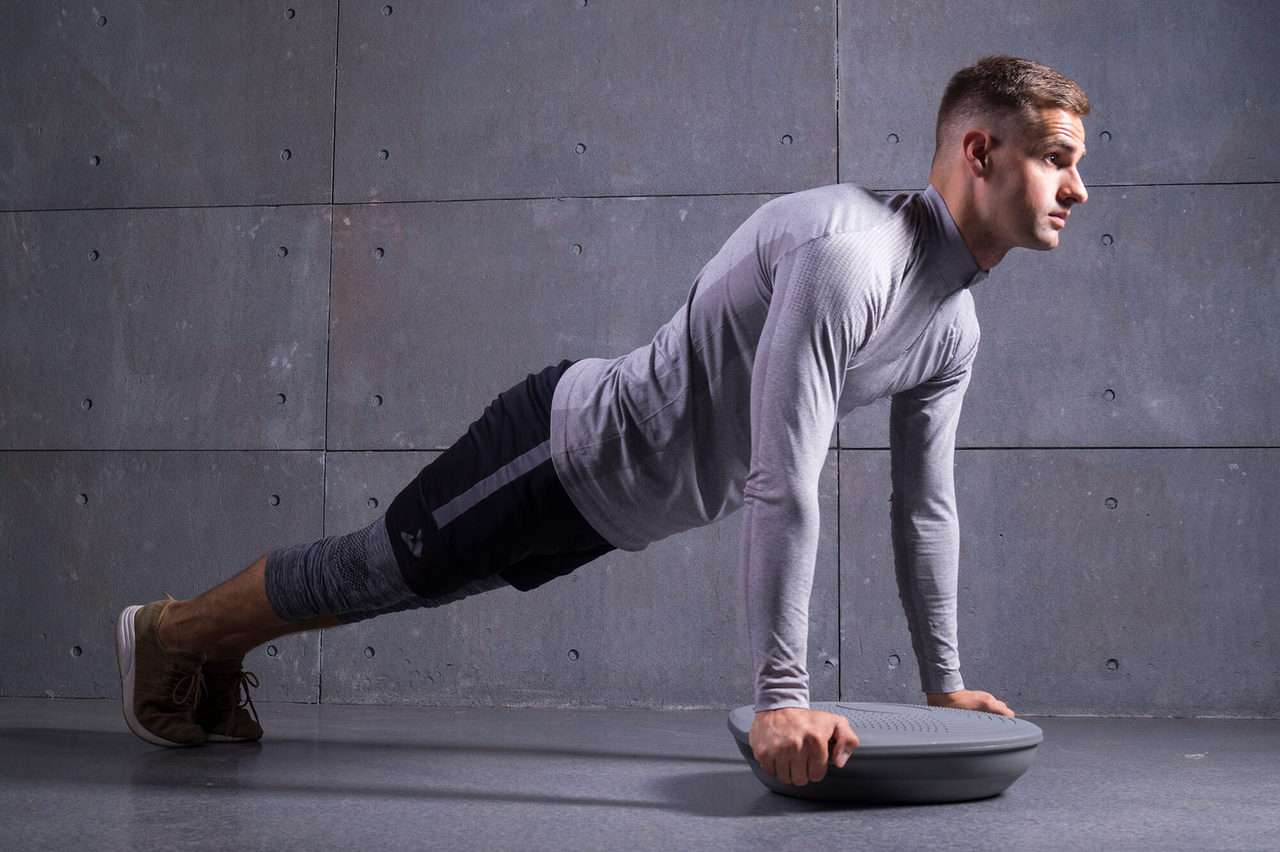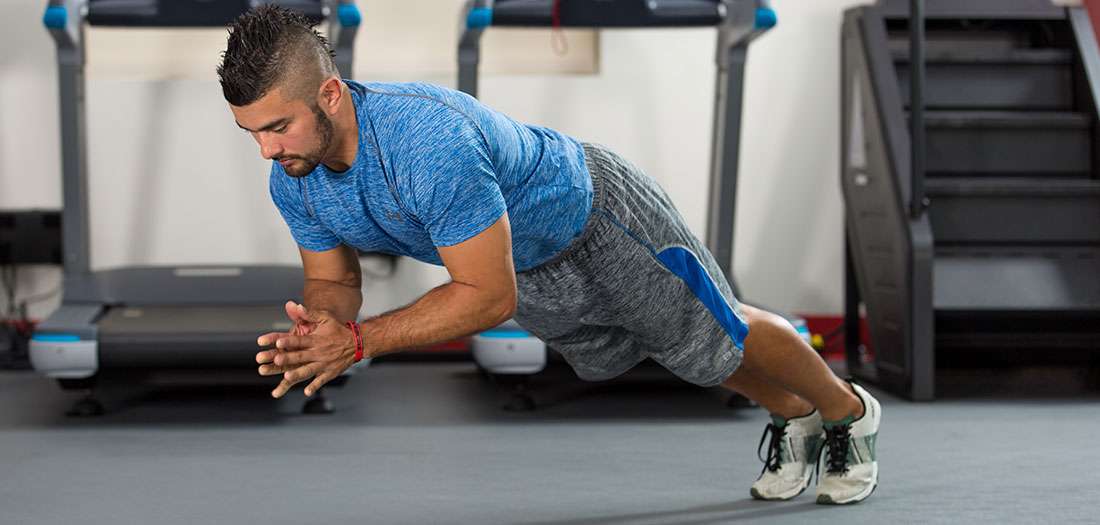Introduction
Do Plyometrics Increase Speed: Plyometrics target fast-twitch muscle fibers, which are crucial for generating rapid, forceful contractions. Training these fibers through plyometrics leads to increased power output, allowing athletes to exert more force with each stride. Plyometric exercises can contribute to greater stride length by enhancing an individual’s ability to stretch and contract muscles quickly.
Plyometrics also help improve stride frequency by increasing an athlete’s ability to produce rapid and efficient muscle contractions. With quicker muscle turnover, athletes can take more steps in a given timeframe. This results in more extended and more powerful strides, which are vital for increasing speed.
Plyometrics challenge the neuromuscular system, which is responsible for coordinating muscle contractions and movements. As the neuromuscular system becomes more efficient, athletes can better synchronize their muscle contractions for maximum speed. Many plyometric exercises mimic the movements required in various sports, making them particularly valuable for athletes.

Do plyometrics actually make you faster?
Plyometrics increases the number of fast-twitch muscle fibers in the legs. These are the muscle fibers recruited for high-intensity, powerful movements, like sprinting. Used together, sprinting and plyometrics are highly effective in developing speed.
Plyometric exercises involve a series of dynamic movements that include rapid, forceful muscle contractions followed by quick stretches of the same muscle groups.
Muscle Power Development: Plyometrics primarily target fast-twitch muscle fibers, which are crucial for explosive power. Training these fibers leads to increased power output, a key factor in achieving higher speeds during activities like sprinting or jumping.
Stride Length: Plyometrics are effective at increasing stride length by improving an individual’s ability to stretch and contract muscles rapidly. Greater stride length allows athletes to cover more ground with each step, directly contributing to enhanced speed.
Stride Frequency: Quick stride turnover is essential for maintaining high speed. Plyometrics help improve stride frequency by enhancing an athlete’s capacity for rapid, efficient muscle contractions.
Neuromuscular Efficiency: The coordination between the nervous system and the muscles, known as neuromuscular efficiency, plays a significant role in speed. Plyometric exercises challenge and enhance this coordination, leading to smoother and more efficient movements.
Sports-Specific Performance: Many plyometric drills mimic the movements required in various sports, making them highly relevant for athletes. For instance, basketball players can benefit from lateral movements and jumping exercises, while soccer players can improve acceleration and agility through targeted plyometrics.
Do plyometrics make you more explosive?
Plyometrics is a type of exercise that can help improve your overall athleticism and explosiveness. Explosiveness is for many sports, including basketball, football, and soccer. Explosive power is in many sports because it allows players to generate force quickly and powerfully.
Plyometrics are highly effective at building explosive power.
Fast-Twitch Muscle Activation: Plyometrics primarily target fast-twitch muscle fibers, which are responsible for generating rapid and powerful contractions. Training these fibers leads to increased power output, an essential element of explosive movements.
Neuromuscular Efficiency: Plyometric exercises challenge the neuromuscular system, which includes the nerves, muscles, and their coordination. Improved neuromuscular efficiency allows athletes to synchronize muscle contractions more effectively, resulting in smoother and more explosive movements.
Stretch Reflex Enhancement: Plyometrics train the stretch reflex, a neuromuscular response that occurs when a muscle is rapidly stretched and then contracts forcefully. This reflex is a vital component of explosive power and contributes to quick, dynamic movements.
Stride Length and Frequency: Plyometrics can help improve stride length and stride frequency. This is particularly relevant for sprinters, where longer strides and faster leg turnover result in greater speed and explosiveness.
How long does it take to get faster with plyometrics?
Depending on what you are training for, we plyometric training 1-2 times per week in conjunction with a strength-based training program. Like most training programs, results would start to show after 4-8 weeks.
The timeline for achieving speed improvement through plyometrics can vary widely from person to person.
Training Experience: Individuals with prior athletic or fitness training may progress more rapidly due to a certain level of conditioning and familiarity with exercises.
Consistency: The frequency and consistency of your plyometric workouts significantly impact the rate of improvement. Regular, structured training is key to achieving faster results.
Age and Fitness Level: Age and current fitness level influence the body’s ability to adapt and improve speed. Younger individuals and those with a solid fitness foundation may experience quicker progress.
Training Volume and Intensity: The volume (number of sets and repetitions) and intensity (difficulty of exercises) of your plyometric workouts play a direct role in determining the rate of improvement. More intense and challenging workouts can lead to faster progress.
Nutrition and Recovery: Proper nutrition and adequate rest are essential for recovery and adaptation. Insufficient recovery can slow down your speed improvement.
Do plyometrics make you punch harder?
Plyometric pushups help to improve the explosive strength and speed in your shoulders, arms, and chest, which are the main body parts that generate power in your punches.
Plyometrics are highly effective at building explosive power, which is essential for generating forceful punches.
Fast-Twitch Muscle Activation: Plyometrics primarily target fast-twitch muscle fibers, which are vital for generating rapid and forceful contractions. These fibers are heavily involved in explosive movements, such as delivering a powerful punch.
Neuromuscular Efficiency: Plyometric exercises challenge the neuromuscular system, which comprises the nerves, muscles, and their coordination. Improved neuromuscular efficiency allows for more effective and synchronized muscle contractions, resulting in more explosive movements.
Stretch Reflex Enhancement: Plyometrics also train the stretch reflex, a neuromuscular response that occurs when a muscle is rapidly stretched and then contracts forcefully. This reflex is crucial for quick, dynamic movements, like those involved in delivering a hard punch.
Core Strength: Plyometric training often engages the core muscles, which are essential for generating power and stability during a punch. A strong and stable core can lead to more forceful and controlled movements.
Do plyometrics make you slower?
Plyometrics make you a faster runner
This is to understand as plyometrics concentrates on your fast-twitch muscle fibers, which can improve power and keep you at the top of your game. Plyo is not your rest day workout as it requires you to use your muscles to near-maximum potential.
Plyometrics are primarily designed to improve speed and agility. They achieve this by targeting various aspects of athletic performance.
Fast-Twitch Muscle Activation: Plyometrics engage fast-twitch muscle fibers, which are responsible for quick, forceful contractions. Training these fibers is essential for generating explosive power, a key factor in speed improvement.
Neuromuscular Efficiency: Plyometric exercises challenge the neuromuscular system, which includes the nerves, muscles, and their coordination. Improved neuromuscular efficiency allows individuals to synchronize muscle contractions more effectively, resulting in smoother and faster movements.
Stretch Reflex Enhancement: Plyometrics train the stretch reflex, a neuromuscular response that occurs when a muscle is rapidly stretched and then contracts forcefully. This reflex is crucial for quick, dynamic movements, such as those required for sprinting.
Stride Length and Frequency: Plyometrics can lead to improvements in stride length and stride frequency, both of which are essential for increased speed. Longer, more powerful strides and a faster stride turnover contribute to improved performance.
How often should you do plyometrics for speed?
Frequency and duration. Plyometrics exercises place a high demand on the athletes’ body thus adequate rest must be for the body to recover from the excessive load. Typical recovery time is between 48 to 72 hours. Thus, the frequency of plyometrics training is two to three sessions per week.
The optimal frequency of plyometric training for speed improvement can vary depending on individual factors, training goals, and the specific phase of your training program.
Beginner Level (2-3 Times Per Week): If you’re new to plyometrics or have limited experience, starting with 2-3 sessions per week is a good approach. This allows you to adapt gradually while minimizing the risk of overtraining.
Intermediate Level (3-4 Times Per Week): Individuals with some experience in plyometrics can consider increasing their training frequency to 3-4 times per week. This frequency can help maintain consistent progress.
Advanced Level (4-6 Times Per Week): Advanced athletes who have developed a solid foundation in plyometrics and have specific speed-related goals may benefit from training 4-6 times per week. However, this should be done cautiously and under the guidance of a qualified coach or trainer.
Do plyometrics increase size?
Plyometric exercises typically incorporate a jumping or hopping type motion done in rapid succession with 100% effort. Plyometrics build mass very effectively because they require 100% of the muscle fibers in the muscle that you are working to fire.
While plyometrics are primarily associated with power and speed development, they can influence muscle size to some extent.
Fast-Twitch Muscle Activation: Plyometrics primarily target fast-twitch muscle fibers, which are responsible for quick and powerful contractions. Training these fibers can lead to muscle hypertrophy, or an increase in muscle size.
Strength and Power Development: Plyometric exercises enhance strength and power, both of which can contribute to muscle growth. When your muscles work against resistance (as in plyometrics), they can develop in size, especially if combined with appropriate nutrition.
Resistance Variation: Some plyometric exercises involve lifting your body weight or using resistance, such as medicine balls or weighted vests. This added resistance can further stimulate muscle growth, particularly in the muscles used during the exercise.
Does plyometrics help acceleration?
Sprint and plyometrics training can improve acceleration, primarily through increased step length and a greater emphasis on VF.
Plyometrics are particularly effective at improving acceleration for several reasons.
Fast-Twitch Muscle Activation: Plyometric exercises primarily target fast-twitch muscle fibers, which are responsible for rapid and powerful contractions. Training these fibers improves the body’s ability to generate force quickly, a key factor in accelerating.
Stride Length Improvement: Plyometrics contribute to the development of greater stride length. By training the body to rapidly stretch and contract muscles, individuals can take more significant steps, allowing them to cover more ground with each stride. In acceleration, a longer stride is crucial for a quick burst of speed.
Stride Frequency Enhancement: Plyometrics play a significant role in increasing stride frequency, or how quickly an athlete can turn over their steps. The ability to contract muscles rapidly and efficiently is essential for maintaining a high frequency of strides during acceleration.
Neuromuscular Efficiency: Plyometric exercises challenge the neuromuscular system, which includes the nerves, muscles, and their coordination. Improved neuromuscular efficiency allows athletes to synchronize muscle contractions better, leading to smoother and more efficient movements during acceleration.

Conclusion
Plyometrics engage fast-twitch muscle fibers, which are crucial for generating explosive power. This improved power output is directly relevant to increasing speed. Strong, forceful muscle contractions are key to achieving greater speed when sprinting, jumping, or changing direction rapidly. Many plyometric exercises mirror the movements required in specific sports, making them highly relevant for athletes.
Plyometrics contribute to the development of greater stride length. By training the body to rapidly stretch and contract muscles, athletes can take more significant steps, covering more ground with each stride. In sprinting, this translates to a higher overall speed. Plyometrics training also play a vital role in increasing stride frequency, or how quickly an athlete can turn over their steps.
The ability to contract muscles rapidly and efficiently is critical for maintaining a high frequency of strides during activities like sprinting and running. Plyometric exercises challenge the neuromuscular system, which includes the nerves, muscles, and their coordination. Improved neuromuscular efficiency allows athletes to synchronize muscle contractions better, resulting in smoother and more efficient movements that contribute to increased speed.

